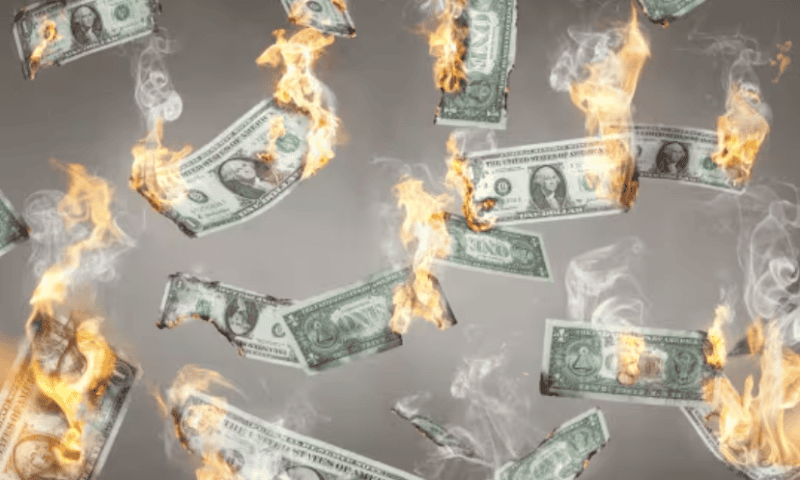Semiconductor stocks are bubbling and could lose 40% of their value
Parallels to the top of the internet bubble are too obvious to ignore.
Nvidia Corp.’s recent dive into correction territory is most likely the beginning of something far more serious for Nvidia and other semiconductor stocks.
That’s the implication of recent research into market bubbles and their eventual bursting. The research suggests it’s “nearly certain” that, at some point in the next two years, the market value of Nvidia NVDA, +6.76%, as well as the semiconductor industry generally, will be down 40%.
This forecast emerges from research conducted by Robin Greenwood and Andrei Shleifer of Harvard University, and Yang You of the University of Hong Kong. Their study, entitled “Bubbles For Fama,” was published in the Journal of Financial Economics. They found that the more an industry outperforms the S&P 500 SPX over the trailing two years, the greater the likelihood it will crash. The researchers define a crash to be a 40% drop over the subsequent two years.
When an industry’s trailing two-year alpha — the margin by which it beats the market — is 100 percentage points, according to the researchers’ calculations, the probability of a crash is 53%. It grows to 76% when the alpha is 125 percentage points, and to 80% when the alpha is 150 percentage points. Above that, a crash becomes “nearly certain.”
The semiconductor industry’s trailing two-year alpha currently is just shy of 200 percentage points. Nvidia’s is more than 600 percentage points.
Dot-com bubble 2.0
The parallels to the bursting of the internet bubble are obvious, since in the late 1990s several dot-com stocks far outpaced the S&P 500 and then crashed. There’s another parallel with the March 2000 top of that bubble that is less obvious, however: Investors reacted to the initial correction off that top as a buying opportunity. That is a hallmark of a major top, according to contrarian analysis.
Consider the average recommended equity exposure in March 2000 among a subset of Nasdaq-focused short-term stock-market timers. (This average is what’s reported in the Hulbert Nasdaq Newsletter Sentiment Index, or HNNSI.) Instead of falling in the wake of the Nasdaq Composite’s COMP initial 10% correction from its bull-market high, the HNNSI actually grew more than 30 percentage points. That meant that investor bullishness had reached exuberant levels. We all know what happened next.
We may be seeing something similar today in investor reaction to Nvidia’s recent correction — which saw the company’s stock drop 16.1% on an intraday basis in just two trading sessions. Though it’s impossible to know how many investors are treating this correction as a buying opportunity, it’s clear from my review of the investment blogosphere that a considerable number of them are doing so.
Track record
This isn’t the first time I’ve relied on the Harvard study to make crash predictions, and it’s important to review how those prior predictions turned out. Here’s a status report on those for which the two-year prediction period has passed. (There are three additional columns for which the jury is still out.) As you will see, of the five predictions for which the two-year period has passed, four were successful:
- Nov. 27, 2017: I reported that the odds of bitcoin BTCUSD, 0.59% crashing were greater than 80%. The cryptocurrency was 60% lower just over a year later.
- Jun. 27, 2019: In this column I reported that bitcoin was “very likely to crash soon.” It was more than 50% lower in nine months’ time.
- Feb. 4, 2020: In this column I reported that Tesla Inc. TSLA, +2.61% was forming a bubble that was about to pop. In less than two months the stock was 60% lower.
- Feb. 15, 2021: In this column I reported that the “S&P 500 Technology Hardware, Storage & Peripherals index” was forming a “bubble at risk of bursting.” This prediction was not successful, as over the subsequent two years the index fell no lower than 13.1% below the index’s level when that column was published.
- Feb. 26, 2021: In this column I reported the significant probability that bitcoin would crash at some over the subsequent two years. In 18 months’ time it was 68% lower.

